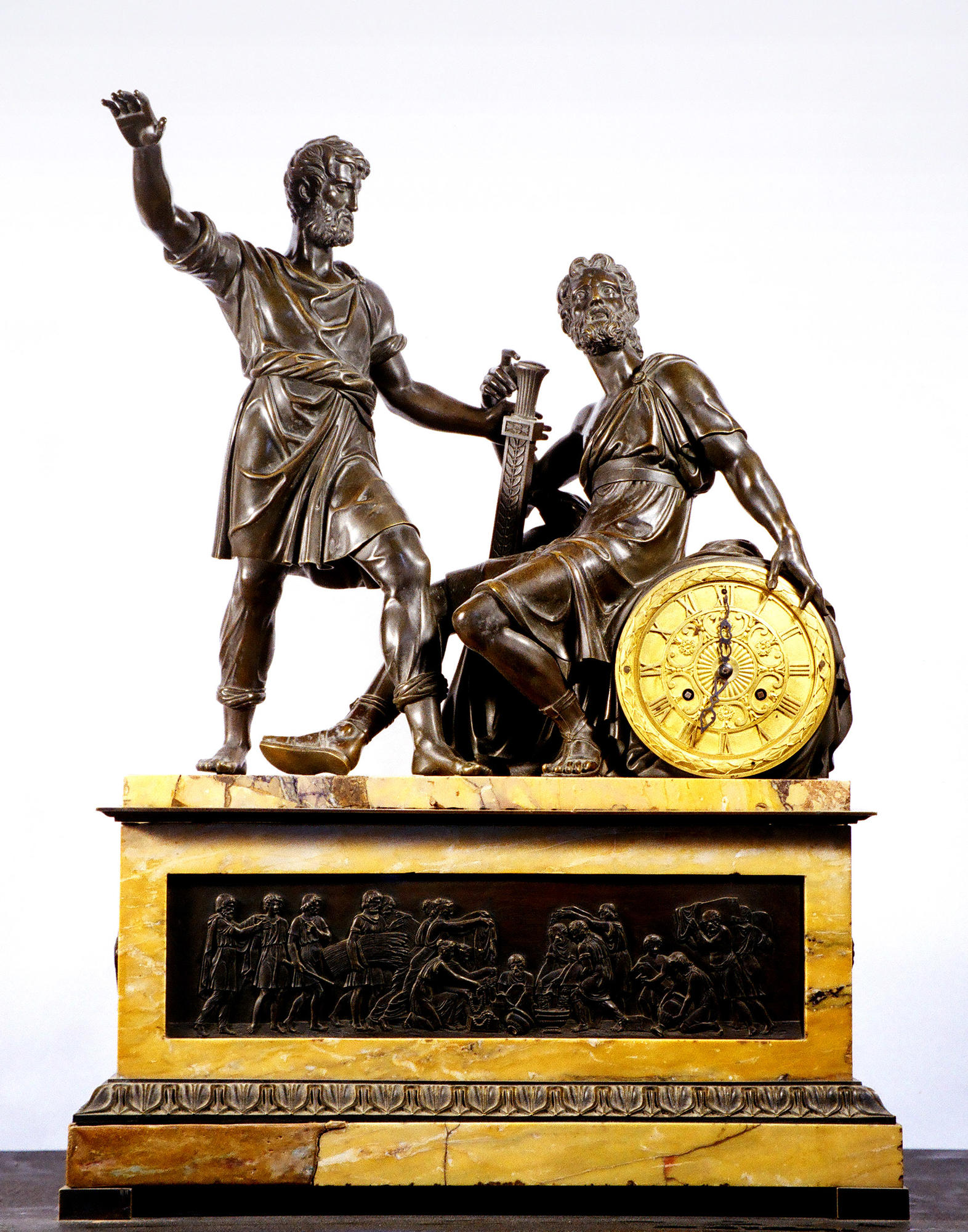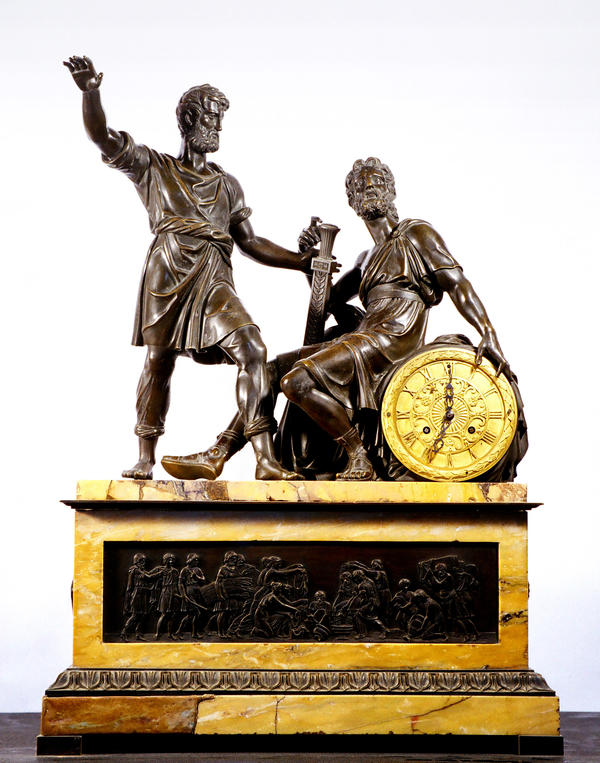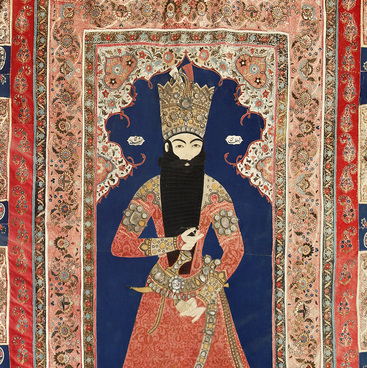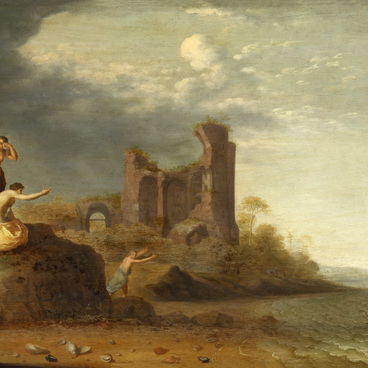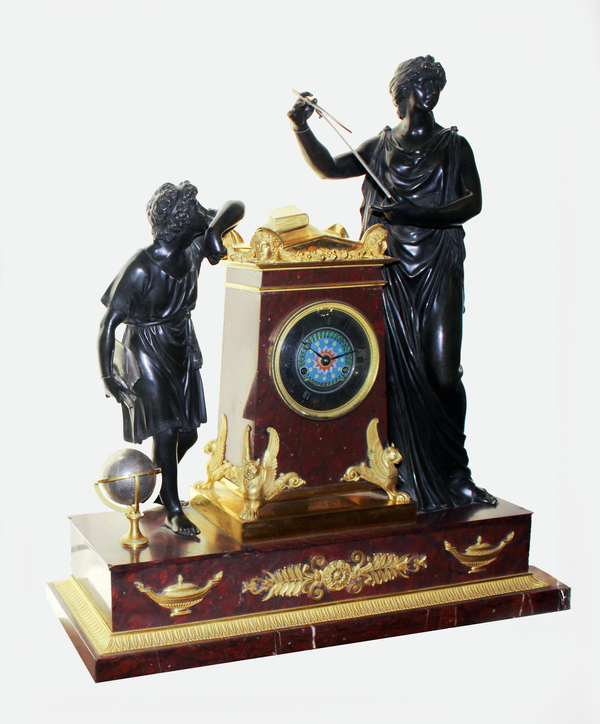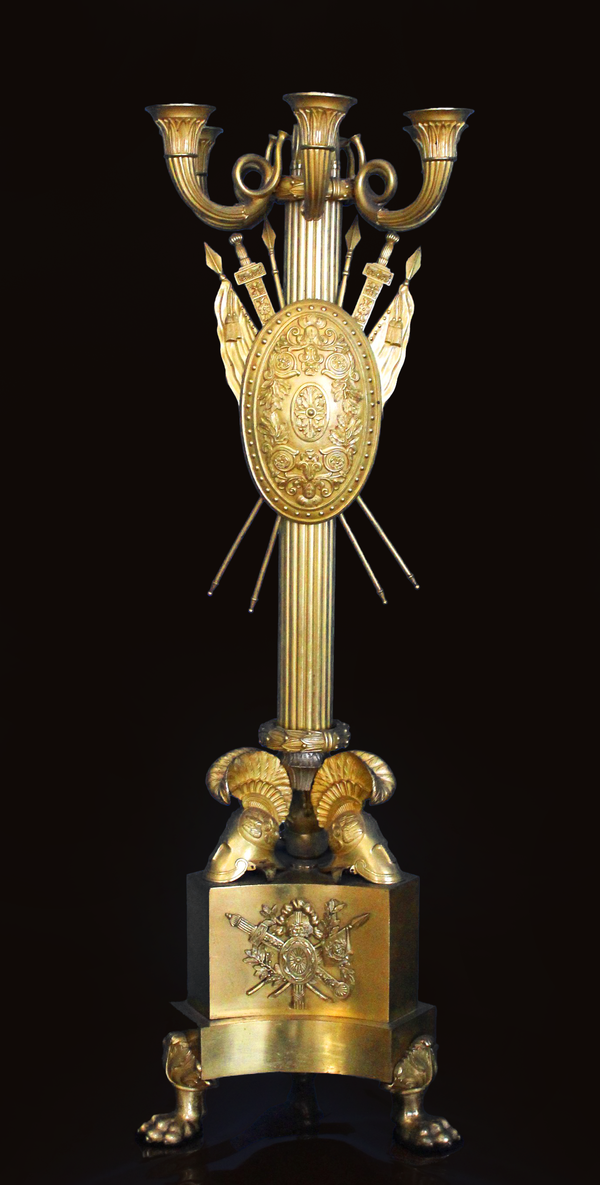The idea of creating a monument dedicated to the winners of Polish interventionists belongs to the Academy of Arts. The author of the monument was Ivan Martos. He began work in 1812 and after 4 years the founder Vasyl Ekimov cast the sculpture entirely. The monument required 18 tons of brass and copper.
Plot of the monument: the resident of Nizhny Novgorod Kuzma Minin is pointing Prince Pozharsky at the Kremlin, calling on the prince to protect the fatherland from Polish invaders. Minin is also handing him the sword as to the future military commander.
Initially, the author wanted to portray both figures standing, but the public didn’t approve it - it is impossible to portray a commoner and a prince as equals. The inequality of the sculpture was emphasized by the clothes. Noble prince is dressed in toga, while Minin is wearing a shirt and trousers.
Money for the monument was collected all over Russia. It was installed in 1818.
In 1820, the French bronze player Tomir received an order from the Russian industrialist and patron Demidov to make a clock similar to the monument “Minin and Pozharsky” by the sculpture Martos.
Tomir produced small and large models of the clock, which were replicated many times by French and Russian bronze workers. The clock from the exhibition of the Vorontsovsky Palace refers to a small model, made of patented bronze, gold bronze and yellowish Siena marble.
The clock is made in the Russian Empire style. This is a style in painting, architecture and decorative applied art that appeared in France during the reign of Napoleon Bonaparte. The main aim of this direction of art was to praise imperial power. Artists who created their works in this style focused on antiquity. The Empire style is characterized by monumentality, antique ornaments and images, theatrics.
Since Russia’s victory over Napoleon in the war of 1812 – 1815 the Russian Empire style had been influenced by the French one. This style sought to reflect the ideas of patriotism, military glory, and national rise.
The figures of Minin and Pozharskiy resemble antique sculptures. The image of heroes is not devoid of theatrics.
Unlike the monument, the sculpture group has a different angle of the sword of the sitting figure Pozharskiy. The base for the figure of the prince is a box with a clock mechanism. The clock dial is presented as a shield, the numbers imitate patterns of armor.
The bronze relief of the clock pedestal shows patriot citizens donating their property for the benefit of the Motherland.
The clock ‘Minin and Pozharskiy’ render images of Russian history with true antique greatness and heroism.
Plot of the monument: the resident of Nizhny Novgorod Kuzma Minin is pointing Prince Pozharsky at the Kremlin, calling on the prince to protect the fatherland from Polish invaders. Minin is also handing him the sword as to the future military commander.
Initially, the author wanted to portray both figures standing, but the public didn’t approve it - it is impossible to portray a commoner and a prince as equals. The inequality of the sculpture was emphasized by the clothes. Noble prince is dressed in toga, while Minin is wearing a shirt and trousers.
Money for the monument was collected all over Russia. It was installed in 1818.
In 1820, the French bronze player Tomir received an order from the Russian industrialist and patron Demidov to make a clock similar to the monument “Minin and Pozharsky” by the sculpture Martos.
Tomir produced small and large models of the clock, which were replicated many times by French and Russian bronze workers. The clock from the exhibition of the Vorontsovsky Palace refers to a small model, made of patented bronze, gold bronze and yellowish Siena marble.
The clock is made in the Russian Empire style. This is a style in painting, architecture and decorative applied art that appeared in France during the reign of Napoleon Bonaparte. The main aim of this direction of art was to praise imperial power. Artists who created their works in this style focused on antiquity. The Empire style is characterized by monumentality, antique ornaments and images, theatrics.
Since Russia’s victory over Napoleon in the war of 1812 – 1815 the Russian Empire style had been influenced by the French one. This style sought to reflect the ideas of patriotism, military glory, and national rise.
The figures of Minin and Pozharskiy resemble antique sculptures. The image of heroes is not devoid of theatrics.
Unlike the monument, the sculpture group has a different angle of the sword of the sitting figure Pozharskiy. The base for the figure of the prince is a box with a clock mechanism. The clock dial is presented as a shield, the numbers imitate patterns of armor.
The bronze relief of the clock pedestal shows patriot citizens donating their property for the benefit of the Motherland.
The clock ‘Minin and Pozharskiy’ render images of Russian history with true antique greatness and heroism.
